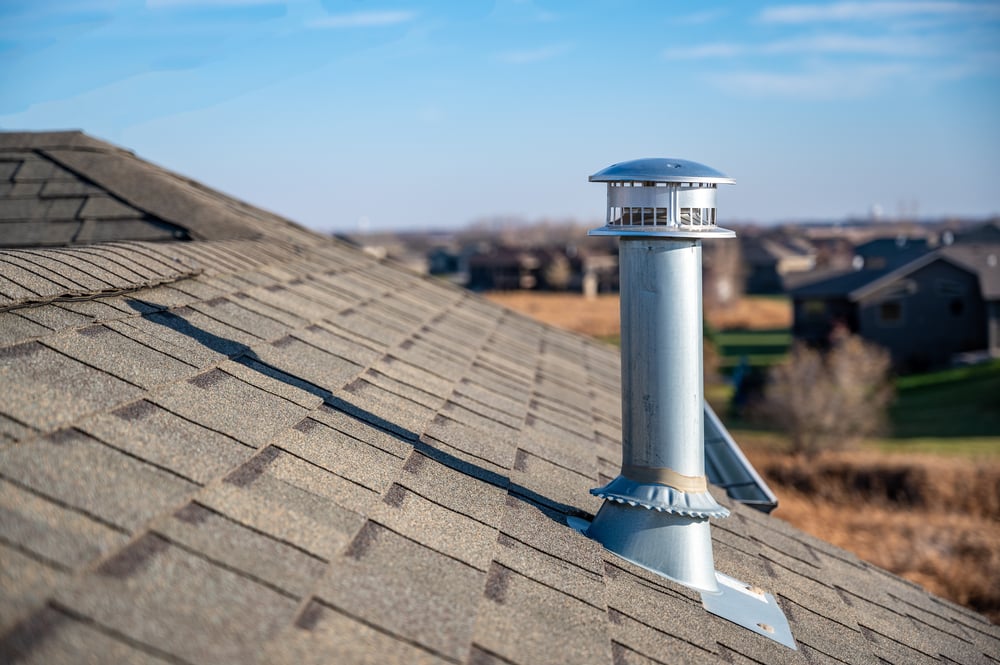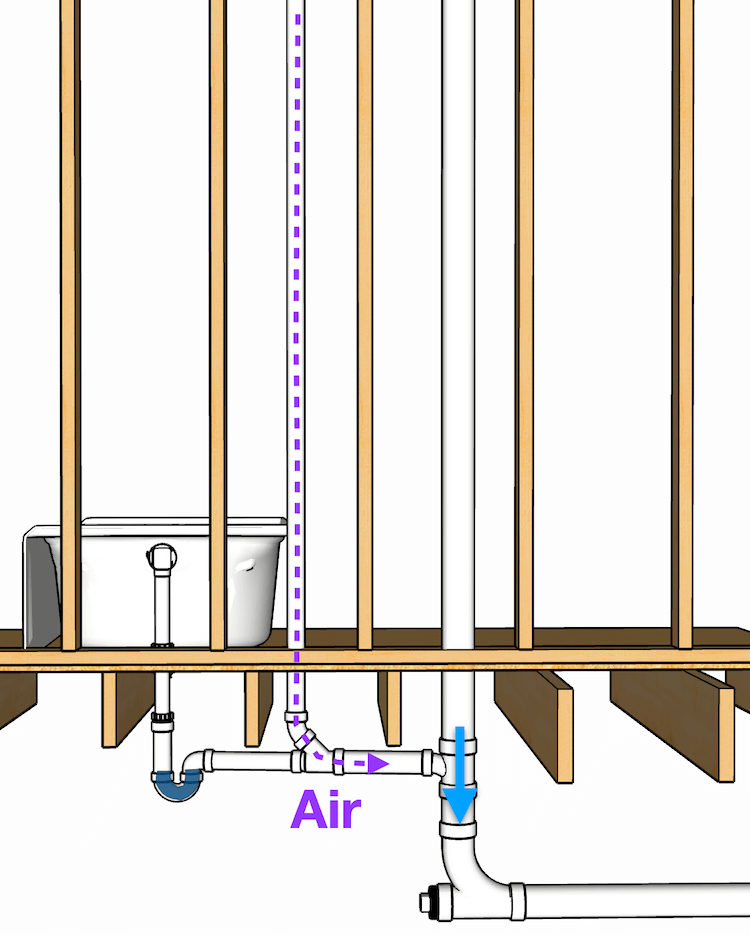The Role of Correct Ventilation in Ensuring Plumbing Systems
The Role of Correct Ventilation in Ensuring Plumbing Systems
Blog Article
Have you been in search of suggestions involving What Is a Plumbing Vent and Why Is It Important?

Proper ventilation in pipes systems is frequently ignored, yet it is crucial for maintaining the functionality and safety and security of your home's pipes. Air flow aids regulate air pressure, prevent the buildup of hazardous gases, and ensure the effective elimination of waste. In this guide, we will explore the value of proper pipes ventilation, just how it works, and the advantages it gives your pipes system.
Comprehending Air Flow in Plumbing
Ventilation in plumbing describes the network of pipelines that allow air to stream via the water drainage system. These vents serve several objectives, including managing air pressure within the pipes, avoiding drain gases from getting in the home, and aiding in the smooth flow of wastewater.
How Air Flow Works in Plumbing Equipments
Atmospheric Pressure Law
Proper ventilation preserves balanced air pressure within the plumbing system. When water moves through pipelines, it displaces air. Without ample air flow, this variation can produce unfavorable pressure, bring about reduce drains pipes or siphoning of water from catches, which can trigger unpleasant odors to leak into the home.
Preventing Drain Gas Build-up
Among the most essential functions of plumbing vents is to stop sewage system gases, such as methane and hydrogen sulfide, from accumulating within the home. These gases can position serious wellness dangers and are very combustible. Vent pipelines enable these gases to leave securely outdoors.
Aiding in Waste Removal
Air flow helps in the effective elimination of wastewater by avoiding airlocks in the drain system. When air can move easily via the vents, it permits water and waste to stream efficiently via the pipelines, reducing the threat of obstructions and backups.
Types of Pipes Vents
Main Heap Vent
The primary stack air vent, likewise referred to as the vent stack, is the primary air vent in a pipes system. It expands from the main drainpipe line up with the roofing system, permitting gases to get away and fresh air to get in the system.
Branch Vent
Branch vents link to the major stack air vent and offer private components, such as sinks, commodes, and showers. These vents ensure that each component has ample ventilation to function appropriately.
Air Admission Valve (AAV).
An Air Admission Valve (AAV) is a one-way valve that allows air to get in the pipes system without the need for a typical vent pipeline prolonging via the roof covering. AAVs are generally made use of in improvements or locations where mounting a conventional air vent is not practical.
Indications of Poor Ventilation in Plumbing.
Slow Draining Fixtures.
If your sinks, tubs, or commodes are draining slowly, it could be an indicator of poor air flow. Poor air flow can create a vacuum cleaner impact, making it tough for water to drain properly.
Gurgling Seems.
Gurgling audios originating from drains are usually a result of air being drawn via water traps as a result of negative pressure in the pipelines. This is a clear indicator of insufficient ventilation.
Undesirable Odors.
Sewage system smells inside your home are a red flag that your plumbing system is not correctly aerated. This could suggest that drain gases are not being appropriately vented outside, causing possibly dangerous problems.
Usual Ventilation Blunders.
Inadequate Vent Sizing.
Utilizing undersized vent pipelines can result in poor air circulation and pressure discrepancies in the system. It's necessary to make use of vents that satisfy the specific demands of your pipes system.
Improper Vent Positioning.
Putting vents as well far from the fixtures they offer can lower their effectiveness. Appropriate placement guarantees that air can move freely and efficiently with the system.
Ignoring Code Requirements.
Building regulations give details standards for pipes air flow. Ignoring these codes can cause a system that stops working to operate properly and might result in expensive fixings or health hazards.
Advantages of Proper Ventilation.
Improved System Performance.
Properly ventilated plumbing systems run a lot more effectively, with less obstructions, faster draining pipes, and less strain on the pipes. This effectiveness expands the life-span of the pipes system.
Improved Air Quality.
By stopping sewer gases from entering your home, appropriate air flow adds to far better indoor air high quality, making your living setting healthier and extra comfy.
Avoiding Water Damage.
Sufficient air flow aids protect against water from being siphoned out of catches, which can result in drain gases getting in the home and triggering water damage with time.
Steps to Make Certain Proper Ventilation.
Consulting Pipes Codes.
Always seek advice from regional pipes codes when making or modifying your pipes system. These codes provide the necessary standards for proper venting and guarantee your system satisfies security standards.
Routine Assessment and Upkeep.
Routine inspections can aid recognize possible air flow concerns prior to they become major problems. Maintenance tasks, such as cleaning up vent pipes and checking for obstructions, are crucial for maintaining the system in good working order.
Specialist Setup.
For new setups or major alterations, it's important to employ a professional plumbing. They have the competence to guarantee the air flow system is properly made and set up according to code.
Verdict.
Appropriate air flow is a vital part of any type of pipes system, ensuring that it works successfully and safely. By comprehending the value of ventilation, recognizing the indicators of inadequate ventilation, and taking steps to keep your system, you can stop expensive concerns and safeguard your home's air top quality.
Understanding the Role of Your Plumbing Vents in the Drainage System
The plumbing system in your home is more than just the kitchen sink, toilet, and bathroom. Some problems that arise within home plumbing are hard to detect because homeowners may not understand potential causes.
One part of the plumbing system that could cause you endless problems is the venting. The drain lines that run through your home and drain wastewater need proper venting to function properly. Faulty plumbing vents can lead to several problems that require the expertise of a plumber to check them out. Before finding experienced plumbing services, there are a few things to learn about plumbing vents.
Why vents are vital
Vents in the plumbing system lead to an outside area such as the roof or the back. The function of these vents is to keep sewer gases away from the drain pipes. They also establish seals in the drainage pipes that prevent the sucking back of waste gases into the home. Venting in the plumbing system also allows oxygen to get into the drainage system, which is an essential component in the breakdown of waste matter. The vents also ensure that the air pressure within the drainage system remains balanced, facilitating the flow of wastewater.
Possible problems
When the plumbing vents are problematic, one of the consequences is imbalanced water levels in the toilet. If you notice that the levels in the toilet bowl rise and fall all the time, then there may be something wrong with the vents.
Another issue is air bubble formation within the toilet. In most cases like these, the drain pipes are not receiving enough air. Lack of air pressure equalization is what leads to water flow problems. If you come across such issues in your home, make sure you call professional plumbers, such as the ones from Perfection Plumbing & Drain Cleaning Ltd.
Potential causes
Several scenarios can lead to some of the plumbing problems that homeowners suffer because of venting. One such scenario is the use of incorrectly sized vents. Usually, vents are the same size as the drain line to facilitate proper venting. Vents that are too small will lead to some plumbing issues. Another potential cause is fixtures that are not close enough to the vents. In this scenario, air forces itself through the traps of other fixtures, leading to gurgling sounds from toilets and sinks.
Most of these problems also happen with clogged vents. Tree leaves and debris can cause clogging when they make their way down a vent. Unclogging plumbing vents is a service that you can entrust to Saskatoon plumbers. They will know how to snake down vents and remove clogging stuck in fixtures.

I found that piece of writing about Essential Plumbing Vent Pipes: Understanding Their Role when doing a lookup on the search engines. Are you aware of another person who is curious about The Upsides of Proper Ventilation in Plumbing Design? Take a moment to promote it. Thanks for your time spent reading it.
Visit Website Report this page